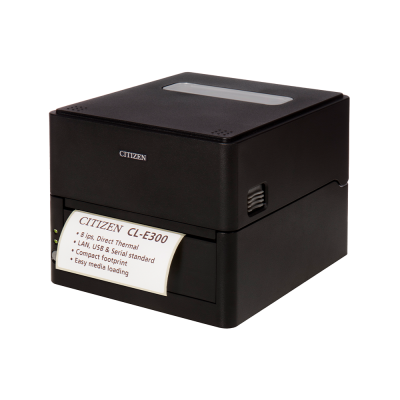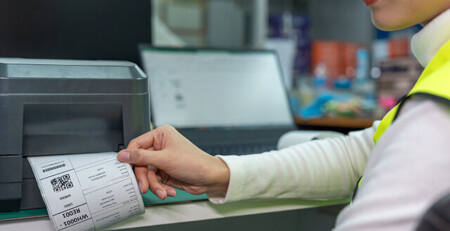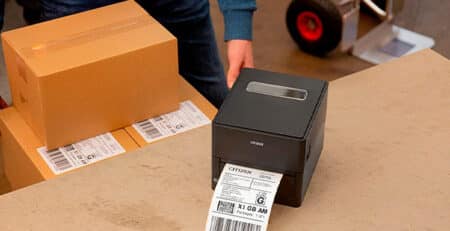Why label printers are essential in e-commerce logistics

In an e-commerce business where packages need to go out quickly and flawlessly, label printers are more than just handy tools – they are a key part of the overall shipping process. With a properly set up solution, labels can be automatically generated, customized to order and printed without delays.
This guide explores how label printers help streamline workflows, reduce manual tasks and ensure traceability from picking to delivery. We take a closer look at technological differences, integration into the package flow and the role label printing plays in scalable and reliable e-commerce logistics.
Automation in parcel flow: Less manual work, more speed
When label printers are connected directly to e-commerce platforms or shipping integrations, labeling shipments can be done without manual clicks. This means that every time an order is registered as ready to ship, the label is automatically generated – ready to print without any middlemen. The result is fewer printing errors, faster package handling and a more stable workflow.
This kind of automation frees up time and reduces the need for repetitive tasks that otherwise require concentration and double checking. This not only reduces errors in labeling and packing, it also contributes to a more consistent flow for high order volumes. The integration enables a continuous process where orders move from webshop to packing table without stopping along the way.
By thinking of label printing as an integrated part of the digital workflow, an automated connection between order processing and physical shipping is created – with significant gains in both time and reliability.
Technological differences: Thermoprint and label types in practice
When choosing a label printer for e-commerce, it’s crucial to understand the difference between the most commonly used technologies: direct thermal printing and thermal transfer. Both methods use heat to create prints, but their application and results differ.
Direct thermal printing uses heat-sensitive paper that changes color on contact with the print head. It’s a fast and maintenance-free method as no ink or toner is required. It is suitable for shipping labels that only need to last for a limited time and are not exposed to heat, sunlight or abrasion.
Thermal transfer uses a ribbon foil between the printhead and label, creating more resistant prints. This method is relevant if labels need to last longer or are used in more demanding environments, such as outdoor storage or transportation in humid conditions.
In addition to the printing method, the format and core size of the label material also come into play. Typical sizes such as 105 x 148 mm or 103 x 199 mm need to match both the printer type and the shipping solution requirements. Desktop printers usually use small core diameters, while industrial devices support larger rolls and longer printing sessions without replacement.

Scalability and return logistics: When order volumes grow
As a webshop scales, the complexity of handling orders on a daily basis increases. This is where label printing becomes a stabilizing factor because it standardizes procedures and reduces the need for manual adjustments. A label printer that is adapted to the company’s order volume and data base makes it possible to maintain efficiency – even during peak times.
A key aspect of scaling is the handling of returns. When labels are printed with unique information and order number integration, returns are both faster and more secure. It provides an overview and makes it easy to reintroduce products into inventory without delays. At the same time, clear traceability is created, which minimizes sources of error in both the customer and logistics chain.
Standardizing label information across both shipping and returns creates a cohesive system that supports growth without burdening operations. It allows you to expand capacity without requiring increased administration or staffing.
Integration and work environment: The label printer’s place in everyday life
The placement of a label printer in the packing area affects both efficiency and work comfort. A device that is easily accessible and placed in the same row as other packing stations reduces unnecessary movement and ensures a smooth flow. This improves the pace of shipping without compromising on ergonomics.
At the same time, integration is not just about physical location. When the label printer is connected directly to the company’s ERP or shipping platform, the need for screen changes and manual transfers is reduced. This makes it possible to work in one system where orders, inventory data and label generation are all in one place.
This combination of physical and digital integration creates a stable workflow with fewer interruptions and a lower margin of error, contributing to a calmer and more predictable work environment – especially during peak periods.








